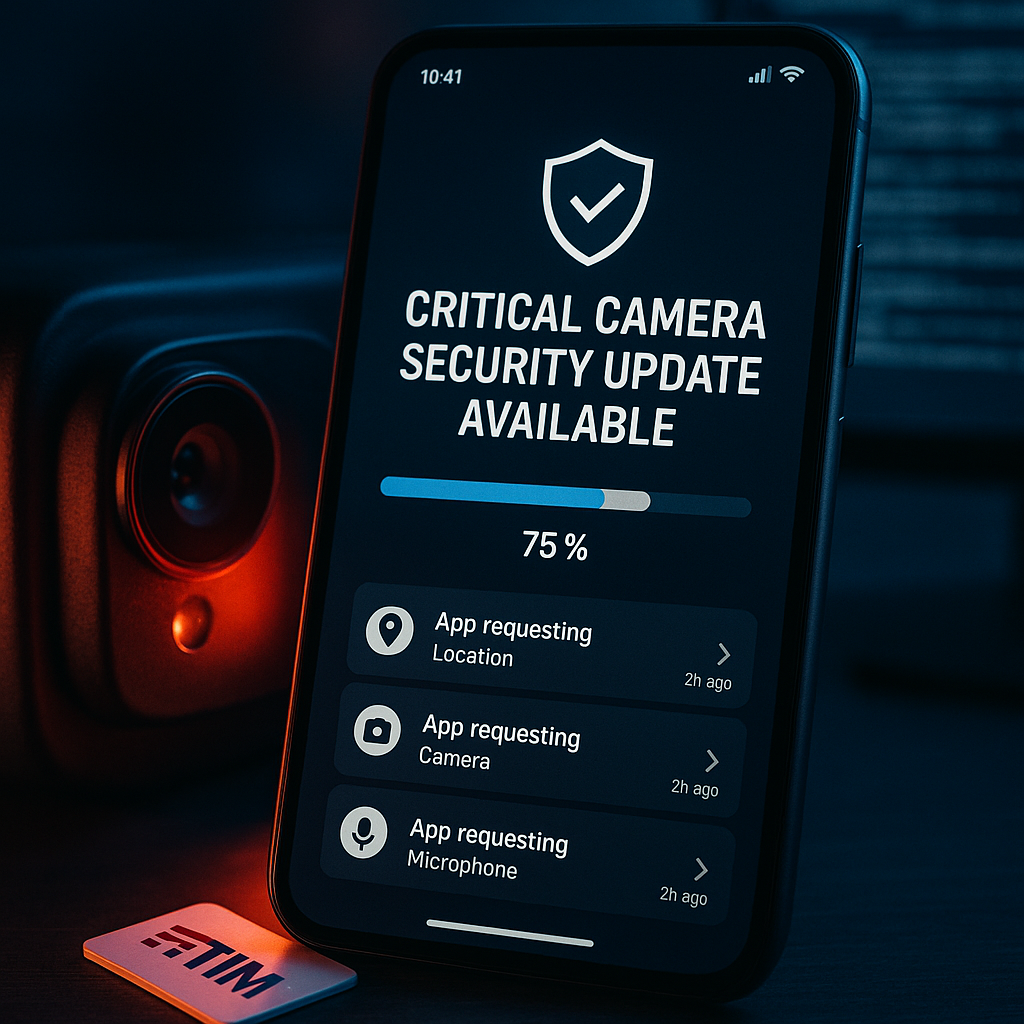Key Takeaways
- Start with a realistic plan. Map your smart home essentials by outlining which rooms and features matter most. Prioritize affordable devices such as smart plugs, lights, and entry-level hubs to maximize impact while keeping spending in check.
- Compatibility is king, not just price. While low-cost options are tempting, mixing devices across multiple brands can create frustrating incompatibilities. Build your smart home around a single ecosystem (like Google Home, Alexa, or Apple HomeKit) for seamless control and easier automation.
- Anchor your setup with a reliable hub or voice assistant. Choosing a versatile hub or smart speaker as your central controller opens up future expansion and makes it easier to add budget-friendly devices down the line.
- DIY installation provides savings and confidence. Most budget smart plugs and lights offer straightforward app-guided installation, letting you learn the ropes while avoiding unnecessary service fees.
- Choose devices with strong app support and regular updates. Inexpensive devices without reliable apps or ongoing update support can become obsolete quickly. Favor brands with solid customer reviews and a reputation for continuous software improvement.
- Begin automation with lights and plugs for immediate impact. Smart bulbs and plugs are the easiest, most cost-effective way for newcomers to automate routines, control devices remotely, and elevate household convenience from day one.
- Watch out for hidden costs. Some budget devices require extra adapters or bridges, increasing the total investment. Always double-check compatibility requirements and potential accessory costs before making a purchase.
- Research compatibility to future-proof your smart home. Look for “Works with [your hub/assistant]” labels and verify user experiences to avoid ecosystem fragmentation, which can erode the DIY experience.
By following these practical strategies, you can avoid common pitfalls and establish a solid, affordable foundation for your smart home. The next sections will guide you through the best device picks, step-by-step installation, and the smartest ways to automate your daily routines without wasting a single dollar.
Introduction
Creating a smart home no longer requires specialized knowledge or a hefty budget. Thanks to today’s accessible and user-friendly technology, you can build a connected household using affordable smart plugs, voice assistants, and DIY-friendly devices, all at a fraction of what it once cost.
The secret to a successful and budget-conscious smart home is strategic planning. By prioritizing device compatibility, avoiding overpriced gadgets, and starting modestly with low-cost essentials, you can construct a system that’s both easy to manage and simple to expand. This guide outlines the most effective steps for launching your DIY smart home setup, showing where to invest, what to avoid, and how to enjoy modern conveniences without overspending.
Building Your Smart Home Foundation
Understanding Smart Home Ecosystems
Before buying any devices, it’s crucial to choose the ecosystem that will become the backbone of your smart home. Amazon Alexa, Google Home, and Apple HomeKit each offer unique benefits and different levels of compatibility across devices and price points. Amazon’s Alexa platform is known for wide affordability and a vast selection, with basic smart speakers often priced between $25 and $30. Google Home integrates beautifully with Android smartphones and Google services, making it a logical pick for Android users. Apple HomeKit emphasizes privacy and simple control, although its devices tend to be pricier.
Un passo avanti. Sempre.
Unisciti al nostro canale Telegram per ricevere
aggiornamenti mirati, notizie selezionate e contenuti che fanno davvero la differenza.
Zero distrazioni, solo ciò che conta.
 Entra nel Canale
Entra nel Canale
When selecting your primary ecosystem, consider several key factors:
- Compatibility of devices within your budget
- The smartphone or devices you already use daily
- The level of privacy and data security you require
- Your plans for future expansion of your smart home
Committing to a single ecosystem streamlines device setup and daily control, reducing the risk of running into compatibility issues later. This decision forms the basis for a reliable, scalable, and frustration-free smart home experience.
Strategic Device Selection
You don’t need to outfit your entire house at once. Start with devices that offer the highest return for your investment:
1. Smart Hub or Speaker ($25–$50)
- Serves as the central control point
- Enables hands-free voice control and automation routines
- Doubles as an entertainment device (playing music, news, and more)
2. Smart Plugs ($10–$15 each)
- Instantly convert ordinary appliances into smart devices
- Simple automation boosts convenience and saves energy
- Many budget options now feature energy usage monitoring
3. Smart Bulbs ($8–$15 each)
- Enable dynamic lighting scenes and schedules
- Support energy-saving routines
- Deliver instant, visible upgrades to your environment
By focusing on these staples, you ensure that every dollar spent brings noticeable improvements to day-to-day living.
Budget-Conscious Shopping Strategies
Maximize your smart home budget with timing and research. Try these proven tactics:
- Bundle Deals: Starter kits often include several devices at a reduced rate.
- Seasonal Sales: Big sales events like Prime Day, Black Friday, and back-to-school promotions yield significant savings.
- Refurbished Devices: Certified refurbished products can save you 20–30% without compromising reliability.
Quality should always take precedence over quantity. A handful of well-integrated devices outperform a larger collection of disparate, incompatible gadgets.
Smart Home Setup and Integration
Creating a Reliable Network Foundation
A dependable Wi-Fi network is the lifeline of every smart home. Before connecting any devices, assess your home’s current network:
- Evaluate Wi-Fi coverage in all target rooms
- Consider a mesh Wi-Fi system ($60–$100) for more consistent coverage in larger or multi-story homes
- Put smart home devices on a separate guest network to enhance security without complicating daily use
Position your router centrally, and elevate it above obstacles to maximize coverage. Simple placement adjustments can significantly improve device reliability without additional expense.
DIY Installation Tips
Installing budget-friendly smart devices yourself keeps costs down and accelerates learning. Most affordable devices offer intuitive, app-guided setup:
- Smart plugs: Plug in and follow straightforward app or hub pairing instructions
- Smart bulbs: Replace traditional bulbs, power on, then pair through your ecosystem’s app
- Motion sensors: Use included adhesive strips or simple hardware for mounting
For more advanced installations (such as smart thermostats or security systems), consult reputable online tutorials or manufacturer videos. Always review the instruction manual first to safeguard devices against damage during setup.
Advanced Automation on a Budget
Creating Smart Routines
Unlock the true potential of your smart home by setting up custom automation routines tailored to your lifestyle. For instance:
Morning Routine:
- Gradually brighten bedroom and hallway lights
- Turn on the coffee maker or other appliances using a smart plug
- Play a weather update or news briefing via your smart speaker
Energy Saving Routine:
Un passo avanti. Sempre.
Unisciti al nostro canale Telegram per ricevere
aggiornamenti mirati, notizie selezionate e contenuti che fanno davvero la differenza.
Zero distrazioni, solo ciò che conta.
 Entra nel Canale
Entra nel Canale
- Automatically turn off devices during periods of inactivity
- Adjust thermostat settings or window shades for optimal efficiency
- Dim or turn off exterior lights at dawn or when absence is detected
Automation isn’t exclusive to households—in small businesses, automated lighting and climate control can reduce energy costs. In education settings, smart routines enhance classroom comfort and security.
Expanding Your System Strategically
When you’re ready to grow your system, focus on additions that deliver clear value:
1. Security Devices ($20–$40)
- Motion sensors, door/window sensors, and affordable video doorbells enhance safety, both at home and in small businesses or clinics
2. Environmental Controls ($30–$50)
- Smart thermostats, temperature monitors, and humidity sensors improve comfort while helping manage utility costs in residential, healthcare, and even retail environments
Always verify that new devices are fully compatible with your chosen ecosystem. This avoids costly returns and ensures continued ease of use.
Troubleshooting and Maintenance
Common Issues and Solutions
Being proactive about common challenges helps maintain a smooth experience:
- For connectivity issues, create a map of device locations to identify Wi-Fi dead zones and reposition devices as needed
- When automation routines fail, document working configurations to replicate success later
- To prevent software conflicts, limit the number of third-party apps used to manage your smart home
Maintaining System Performance
Routine maintenance keeps your system dependable and secure:
Monthly Tasks:
- Update device firmware to patch vulnerabilities and access new features
- Review and adjust automation schedules as household habits change
- Clean device sensors to prevent errors
Quarterly Reviews:
- Assess device performance and replace underperforming equipment
- Update passwords for all smart home accounts and devices to deter unauthorized access
- Remove outdated or unused automations to simplify system management
Privacy and Security Considerations
Securing Your Smart Home
Affordable smart home devices shouldn’t come at the cost of security. Ensure robust protection using these strategies:
- Assign strong, unique passwords to each device and service
- Enable two-factor authentication wherever possible
- Stay on top of firmware and app updates
- Segment smart devices onto a separate guest or IoT network for added security
Data Privacy Best Practices
Protect your personal information and maintain peace of mind by:
- Thoroughly reviewing device and app permissions before enabling features
- Disabling unnecessary functions, such as always-on microphones or cameras
- Regularly revisiting privacy settings to adapt to new threats or app updates
- Researching and understanding device data collection and sharing policies (crucial for healthcare offices, legal practices, and any environment managing sensitive data)
Consistently following these steps helps households, educators, healthcare providers, and business owners ensure that privacy is never an afterthought.
Conclusion
Bringing smart technology home on a budget is no longer a pipe dream. With thoughtful planning, a clear focus on compatibility, and an incremental approach starting with impactful essentials, anyone can enjoy a modern, connected living space without breaking the bank. Investing in a strong network foundation and embracing DIY installation amplifies your savings, while smart automation transforms daily routines for greater efficiency and comfort across various contexts, from homes to businesses and schools.
Security and privacy should always remain top priorities. Affordable solutions can, and should, provide robust protection through responsible device management and regular maintenance. Ultimately, unlocking the true value of your smart home lies in building a cohesive, reliable environment tailored to your unique needs.
Looking ahead, the most successful smart home enthusiasts will be those who view technology as an adaptive partner. By leveraging ongoing research, anticipating future compatibility needs, and continuously fine-tuning their setups, you can stay ahead of the curve. Whether you’re a first-time DIYer, a small business owner, or simply striving for day-to-day convenience, the path to a smarter, safer, and future-ready home is open to everyone. The next breakthrough isn’t just about what devices you own. It’s about how effectively you orchestrate them to simplify, secure, and enrich your life.





Leave a Reply